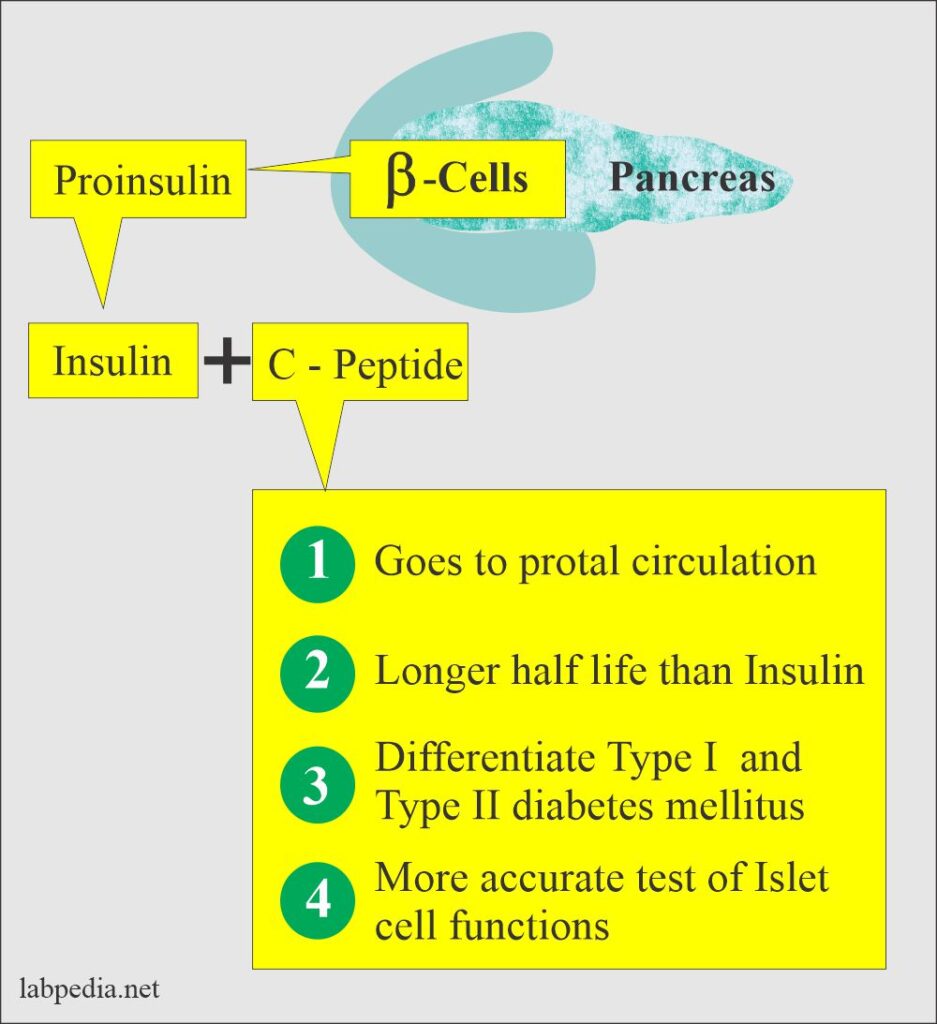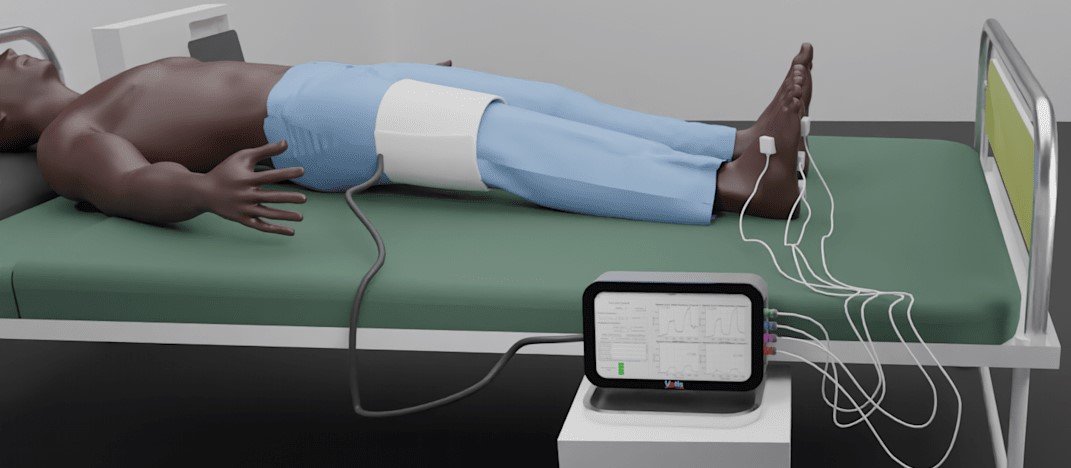Why Scotland Is Now Testing the C-Peptide Levels of Everyone with Type 1 Diabetes was written by Ross Wollen for DiabetesDaily.com, 12 November 2021.
 Scotland has become the world’s first country to begin routine testing of C-peptide levels in patients with type 1 diabetes. The nation hopes to identify patients that have retained robust natural insulin production and who therefore may be able to amend their treatment regimens – and possibly even learn that they don’t have type 1 diabetes at all.
Scotland has become the world’s first country to begin routine testing of C-peptide levels in patients with type 1 diabetes. The nation hopes to identify patients that have retained robust natural insulin production and who therefore may be able to amend their treatment regimens – and possibly even learn that they don’t have type 1 diabetes at all.
Misdiagnosis is a real problem in the diabetes community. As many as 38 percent of older adults that develop type 1 diabetes are misdiagnosed with type 2, for example, but misdiagnoses can happen in the opposite direction as well, and some patients won’t find out the truth for years. Meanwhile, those with less common forms of diabetes, such as latent autoimmune diabetes in adults (LADA) and maturity-onset diabetes of the young (MODY), may have an even more difficult time identifying the nature of their conditions.
Routine C-peptide testing could help clear up some of the confusion. C-peptide is a substance that is created as a byproduct of natural insulin production. Measuring C-peptide is the easiest way doctors have to assess the amount of natural insulin in a patient’s bloodstream; the insulin you buy at the pharmacy and inject doesn’t contain any C-peptide at all.
Professor Mark Strachan of the Edinburgh Center for Endocrinology and Diabetes, who helped shepherd the new program, said in a press release: “C-peptide helps diabetes specialists make a more accurate diagnosis of the cause of diabetes, and that means we can get people on the most appropriate treatment. In some instances, C-peptide testing allowed people to stop very long-standing insulin therapy; this can be life-transforming.”
The foundation for the program was a trial run by Dr. Strachan and his colleagues; the results were published in November 2020 in the journal Diabetic Medicine. At a single Scottish medical center, a total of 859 patients, all of whom had been diagnosed with type 1 diabetes at least 3 years previously, submitted to C-peptide testing.
Read more: Why Scotland Is Now Testing the C-Peptide Levels of Everyone with Type 1 Diabetes
New gene identified that contributes to progression to type 1 diabetes was reported by the Medical College of Georgia at Augusta University for MedicalXpress.com, 16 November 2021.
 When the pro-inflammatory pair, a receptor called CCR2 and its ligand CCL-2, get together, it increases the risk of developing type 1 diabetes, scientists report.
When the pro-inflammatory pair, a receptor called CCR2 and its ligand CCL-2, get together, it increases the risk of developing type 1 diabetes, scientists report.
In this autoimmune disease that typically surfaces in childhood, the interaction of this natural lock and key recruits immune cells to the pancreas, which attack the insulin-producing islet cells, resulting in a lifelong course of insulin therapy and a lifelong increased risk of other health problems like heart and kidney disease, says Dr. Sharad Purohit, biochemist in the Center for Biotechnology and Genomic Medicine at the Medical College of Georgia.
The study, published in the Journal of Translational Autoimmunity, provides evidence the CCR2 gene promotes progression to type 1 as it provides new insight on how to delay disease progression, says Paul Tran, MD/Ph.D. student at MCG at Augusta University. Tran and Purohit are the study’s first authors. The scientists were able to put the pieces together by looking at the longitudinal data on 310 people enrolled in DAISY, a National Institutes of Health-funded study based at the University of Colorado Anschutz Medical Campus in Aurora, that has been following individuals considered at risk for type 1 because of having a relative with it or having one of the genes associated with it since 1993.
The new study focused on 42 individuals who persistently had antibodies against the insulin-producing islet cells but never actually developed type 1, 48 who did develop type 1 and the remainder who did neither and served as the control group. They found that blood levels of CCL-2, the ligand for CCR2, were lower in both individuals who had antibodies but not actual disease as well as those who progressed to type 1 diabetes, Tran says. They also found that both these groups have more of the receptors on their immune cells, which get recruited by the ligand to the six-inch organ in the abdomen that helps us break down the food we eat. Conversely, less receptors mean less recruitment of immune cells, more normal levels of CCL-2 in the blood and less cell destruction, they say.
Read more: New gene identified that contributes to progression to type 1 diabetes
Cap on drug price hikes for privately insured sparks battle was reported by Ricardo Alonso-Zaldivar for APNews.com, 21 November 2021.
 Workers and families with private health insurance would reap savings on prescription drugs from a little-noticed provision in President Joe Biden’s sweeping social agenda bill. It’s meant to break the cycle of annual price increases for widely used medicines. That provision would require drug companies to pay rebates to Medicare if they increase prices above the rate of inflation. Drugs sold to private plans would count in calculating the penalty, like a tax on price increases. The issue is dividing business groups in a fierce lobbying battle.
Workers and families with private health insurance would reap savings on prescription drugs from a little-noticed provision in President Joe Biden’s sweeping social agenda bill. It’s meant to break the cycle of annual price increases for widely used medicines. That provision would require drug companies to pay rebates to Medicare if they increase prices above the rate of inflation. Drugs sold to private plans would count in calculating the penalty, like a tax on price increases. The issue is dividing business groups in a fierce lobbying battle.
Corporate groups focused on affordable employee benefits want to keep the language as is so it would provide price-increase protection for companies and their workers and not just Medicare enrollees. Other groups such as the influential U.S. Chamber of Commerce are backing the pharmaceutical industry’s drive to block restraints on pricing, including inflation caps, saying they would stifle innovation.
The inflation caps would have far-reaching impact for as many as 180 million Americans with private insurance. “A lot of people don’t realize that the bill applies to, and will help, privately insured people,” said Shawn Gremminger, health policy director at the Purchaser Business Group on Health. “But that isn’t a sure thing. As currently structured, that would be the case. But we have been worried and continue to be worried that will change.”
Read more: Cap on drug price hikes for privately insured sparks battle
Finding diabetic foot disease before symptoms show up was reported by Naama Barak for Israel21c.org, 14 November 2021. A new device assesses bloodflow and oxygen in the feet to detect a problem early, while treatment options are still open.
 Around the world, some 150 million people suffer from peripheral artery disease. Often prevalent in people who have diabetes, it can lead to a foot condition that in turn can result in foot amputations and even death. A major problem is that it’s usually discovered only when symptoms appear and treatment options become limited.
Around the world, some 150 million people suffer from peripheral artery disease. Often prevalent in people who have diabetes, it can lead to a foot condition that in turn can result in foot amputations and even death. A major problem is that it’s usually discovered only when symptoms appear and treatment options become limited.
This is where Israeli startup Votis steps in. Founded in 2017, the Jerusalem-based company has developed an innovative device that can identify the disease in its very early stages. “It’s a device to help people with diabetes keep their feet through noninvasive, radiation-free assessment of the blood and oxygen in their feet,” explains Votis cofounder and president Merrill Weber. “Our system is unique in that it can identify the disease while it’s still asymptomatic, so the patient doesn’t even know he has a problem,” he adds. “It gives the doctors a lot more specific information about the disease and a lot more treatment options because there’s less damage at the time that its discovered,” he says.
“We have prototype devices and they’ve been tested on human subjects,” Weber notes. “We’re in the process of finishing our beta device and we expect to do medical trials that will get us regulatory clearance in the US and in Europe in the first half of 2022. We expect to release the devices in the US, Europe and India – where the problem is really significant – in 2022.”
Read more: Finding diabetic foot disease before symptoms show up


The issues of drug pricing is fun to watch. We know there is a better way to price medications. But let’s say the country was deciding which side to drive on. A new proposal to drive on the left side, vs, the status quo of driving on the right and we just know the outcome will be driving in the middle. Of course, the middle will just end up making everyone angry and if anyone follows the new rule, it could be dangerous.
Let’s hope we can end up with something drivable.
The article about a new gene identified for type 1 repeats the common misconception that type 1 typically occurs in childhood. Adults get type 1 as often as children. The median age of onset is actually 30 years of age.